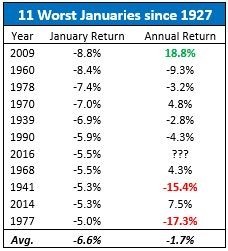Harry S. Dent Jr.'s Blog, page 118
February 8, 2016
Investing Playbook: Denver Just Showed the Best Offense Is a Good Defense
 The best offense is a good defense. I don’t know who first said that, but the Denver Broncos just demonstrated it as well as anyone in last night’s Super Bowl.
The best offense is a good defense. I don’t know who first said that, but the Denver Broncos just demonstrated it as well as anyone in last night’s Super Bowl.
Facing off against the Carolina Panthers, the Broncos’ defense completely shut down the offense led by quarterback Cam Newton. I wasn’t even sure I was watching the same player. He had a completely different performance in the playoffs against Arizona two weeks ago. I’ve never seen one team play two more different games!
In the playoffs game, “Super Cam” had plenty of opportunity to show off his incredible throwing and running talents. He completed 19 out of 26 passes for two touchdowns and scored another two himself. Did you see him jump over two defenders to get into that end zone? How many quarterbacks can do that!? That was probably the best performance of any quarterback I’ve seen in a long time.
And then last night, Cam just couldn’t get a break (I call it the “Cam Shaft”). The Broncos completely shut this all-star player down. The same thing happened with the New England Patriots when the Broncos shut down Brady. He wasn’t able to get off many good passes and neither could Cam.
Congratulation to Peyton Manning for winning his second Super Bowl just as he looks to be retiring… but I hope he bought his defensive line a round of Cristal champagne, because that’s who really took it home!
You’re probably wondering: “Am I reading the right newsletter?” You are. My point, of course, is that offense is never enough. You need both offense and defense in any game or business, and the same applies to investing.
And it’s paramount today as we’re facing off against the most formidable opponent in our lifetimes: the economic winter season.
For those not familiar with my 80-Year Macroeconomic Cycle, the economy follows four seasons much like we see in the weather every year.
Think of it in terms of inflation, which is like temperature in the economy. Mild inflation comes in the spring and fall and that’s when the economy does best. High inflation comes in the summer (think the inflation crisis during the 1970s). And today’s deflationary period is like the declining and freezing temperatures of winter, which brings its own crisis that is much, much more severe.
People keep asking me what they can do with such a bearish forecast. Certainly their high-dividend, less-cyclical multinational stocks will be okay, right?
My response: I wouldn’t count on it! And that’s coming from a guy who used to be one of the most bullish forecasters in history. Back in the late 1980s when I had my breakthrough in demographic cycles, I was positive on the economy because I knew we were facing a long-term boom. But today, I’m one of the most bearish forecasters because I see what’s coming down the pipe!
Many years ago, I went back through the last winter season focusing primarily on the 1930s – the worst crash and depression in U.S. history. I was thinking there must have been some stock sector that did well. Utilities, phone companies, booze, cigarettes, gambling, consumers staples, something! But no – all of those sectors fell. Some fell worse than others, namely automobiles, but not a single one escaped the carnage that ensued.
And even for the most stable companies, it wasn’t because their sales and earnings fell. Rather, it was the fall in their price-to-earnings (P/E) ratio. When fear sets in, investors price in the worst scenario for everything. Even when adjusted for dividends, stocks suffered a 20% loss for the decade. At their worst in July of 1932, they were down 89%!
Real estate bubbled less and so therefore fell less, but still had a slightly negative return for the decade. And commodities… forget about it!
But this is where a good defense would have helped. The one sector that did well (with minor volatility to boot) were the highest-quality, long-term bonds… which is about as defensive as it gets!
Look at the chart:

Long-term Treasurys nearly doubled counting their yields, and AAA corporates more than doubled in the worst decade for stocks and the economy ever.
How’s that for a strong defense?
So my advice to you is this: be like Denver. This is not the time to rely solely on offense. Now’s the time to bring out your best defense and conquer the crash ahead.
I’m still looking out for a spike in Treasury bond yields this year when Sovereign bonds in Europe and other countries face the reality of default. Italy in particular now looks like the next Greece or Cyprus. They’re “too big to fail,” and you know what that means.

Harry
February 5, 2016
At This Rate, Japan Will Fade From Existence
Japan has adopted negative interest rates as the latest effort to all developed nations must face. And right now it’s a problem with no solution.

Negative Interest Rates Are the Next Stage in Global Stimulus
 Since late 2008, central banks around the world have used unprecedented QE to try and stoke the global economy.
Since late 2008, central banks around the world have used unprecedented QE to try and stoke the global economy.
Then in June 2014, the ECB took it a step further. They went negative.
Zero short-term interest rates apparently weren’t enough. The ECB realized that if they couldn’t get banks to loan or consumers to spend, why not really light a fire under their ass and tell them: “if you’re not going to spend, you have to pay to keep your money in the bank!”
The Swiss thought this was a great idea and did the same in December 2014. Later on, the Danish and the Swedes joined the party. And last week, the Bank of Japan decided zero wasn’t enough, either – they went negative, too!
Japan can’t seem to get a grip on the fact that, as a country, they’ve been slowly
February 4, 2016
The Next Bankruptcy to Hit Your Portfolio
 There’s an old saying that if you owe the bank $1 million, you have a problem. But if you owe the bank $100 million, then the bank has a problem.
There’s an old saying that if you owe the bank $1 million, you have a problem. But if you owe the bank $100 million, then the bank has a problem.
That’s the situation we’re in today.
States around the country have racked up outrageous unpaid balances for their pensions. Few of them have any plan for digging out of the hole. Since they have no plan, they’re creating issues for everyone who might be called upon to help them make good on their obligations.
Even if you don’t live in one of these states, you might still have a problem. In effect, the states owe a lot of money, and all of us are the bank!
Some states, like Rhode Island, tried to deal with the issue. That state slashed benefits and jacked up contributions.
But in many states like Illinois, state pension benefits are constitutionally guaranteed, so benefits cannot be cut. This leaves taxpayers in the state to foot the bills as they come due, no matter what the cost. And in some cases, bondholders suffer as well.
That’s where you might have a problem.
In Illinois, the unfunded liability sits at $110 billion and is getting worse by the month. After years of mismanagement by the state, Illinois has about 48 cents of every dollar it needs to make good on its pension promises.
Across the country, smaller entities like cities, school systems, and counties are suffering from the same disease – official mismanagement.
The basic problem is that current politicians negotiate changes, while future politicians are left to clean up the mess when things blow up. These changes include benefit increases, fewer years of service needed to retire, and how much the entity will contribute each year to the pension.
Now, the politicians who created today’s problems in the 1990s and early 2000s aren’t around to answer for their sins.
Meanwhile, the workers who toiled for years with their pensions in mind want what is rightfully theirs.
This is all coming to a head in states like Illinois, and cities like Chicago. The money’s running out, and government officials refuse to raise taxes any higher on their constituents.
It’s about to get interesting, and not in a good way. As to what lies ahead, we have two prime examples. One has already played out, and the other is still unfolding.
Fool Me Once, Shame on Me
The city of Detroit’s bankruptcy was the largest municipal failing in U.S. history. It owed $18 billion that it could not pay. With falling tax rolls and declining population, Detroit begged, borrowed and stole for years to keep going. Eventually it reached the end of its rope.
Besides pensions, the city was also indebted to its bondholders. At the time, investors who bought bonds felt pretty secure. After all, they were backed by the full faith and credit of the City of Detroit. Later on, they realized their mistake.
The contract said that bondholders would be paid before anyone else. No one ever assumes the worst – like a bankruptcy – will come. But here’s a question: what city officials in their right mind will choose to pay bondholders over their police officers, firemen and teachers? Even though it is legally correct, any politician that did so would be run out of town on a rail!
It’s true that some of those boldholders are regular guys like you and me just trying to fund their own retirement. Even so, the town had no intention of paying them with every last dime available. Instead, they diverted money to payroll and city services. They kept their city running.
That might seem like a humane decision, but it defied the contract the city signed when it took the money from bond investors.
The worst offender is the Detroit pension system itself. Detroit borrowed money specifically to top off its ailing pension plan, but then fell behind anyway. When the city went bust, it claimed this bond issue was unauthorized, and therefore they didn’t owe the bond investors anything.
They wanted to have it both ways: get the money, and owe nothing.
And that’s what happened. The bondholders that funded the pension received about 15 cents on the dollar. Meanwhile, the retirees got almost everything they were owed.
Fool Me Twice…
Now Puerto Rico is doing the same dance. The island Commonwealth owes roughly $72 billion among several issuers, including their power authority, general obligation bonds, local development authority, and “moral obligation” bonds.
I put the last one in quotes because these bonds were anything but moral.
When the island reached its maximum borrowing capacity, it wanted to borrow more. So instead of issuing general obligation or some other traditional bond, it issued what are called “moral obligation” bonds. These bondholders couldn’t sue for payment. Government officials were only morally, not technically, obligated to pay them.
That didn’t last too long. Puerto Rico has already quit paying on these bonds. Now island officials are negotiating with the other bondholders on how big of a discount they will get, even as the officials illegally move money from one pot to another.
Since this is a Commonwealth and not a city or county, it doesn’t have access to federal bankruptcy law. The government of Puerto Rico is supposed to pay its debts, period. And it can. The island has enough assets that it could sell to meet its obligations. It can also cut benefits and reduce payrolls.
But it won’t. Instead, it will lay the problem at the feet of bondholders.
This is where you become the bank.
If you own a tax free bond fund, chances are you own Puerto Rico bonds, and your fund will take a hit.
Unfortunately, most bond fund buyers don’t look beyond the rating and the yield on the fund. These metrics won’t help. Investors need to do a much deeper dive on what they own to make sure they aren’t holding the bag when things blow up. This is one time when it doesn’t pay to be the bank.

Rodney
Follow me on Twitter @RJHSDent

February 3, 2016
The U.S. Dollar Will Rise in the Next Crisis
Knockout! Why Big Tech Companies Stand to Lose This Year
 Clocks, scales, and meat slicers. IBM sold all kinds of different items when the company started out a century ago. Back then, it looked nothing like the information and consulting company it is today. It didn’t get into the business of personal computers until decades later. Today, IBM does everything but.
Clocks, scales, and meat slicers. IBM sold all kinds of different items when the company started out a century ago. Back then, it looked nothing like the information and consulting company it is today. It didn’t get into the business of personal computers until decades later. Today, IBM does everything but.
And yet, for all their commitment to changing with the times, their underlying business is imploding.
For years, IBM has resorted to aggressive accounting practices to hide the weakness in their business. They’ve taken on debt to buy back their stock, throwing cash to the wind that should’ve gone to developing their business.
And now that we’re in the middle of earnings season, there’s no other way to say it: results for big technology firms have been pretty awful.
Market leaders such as IBM and Apple have disappointed investors’ expectations out of the gate this year. The strong U.S. dollar is a major factor. With nearly 60% of sales for technology companies coming from overseas, the dollar has become a leading culprit in poor earnings.
Of course, this doesn’t surprise me. I’ve been harping on the strong dollar theme for quite some time. It’s also why our “old school tech” trade is our biggest short position yet in my research advisory, Forensic Investor.
And so far, it’s worked out nicely. But I think it has much farther to go.
Why is that?
For one, I think the U.S. dollar can get much stronger.
In fact, I think the dollar could rise by another 40% or more.
While the U.S. economy may be experiencing one of the slowest recoveries yet, it has very little to do with the value of a dollar. Like anything else, its value is based on supply and demand.
And being the world reserve currency, whenever there is a crisis in the market or even a minor scare, the demand for dollars goes up. People feel comfortable holding dollars in turbulent times. It’s a flight to safety. Or like sucking on a pacifier.
That’s one reason why the dollar remains in demand.
But, there is another more powerful reason.
When Everyone Runs for the Exit…
You see, throughout the financial systems there’s loads of leverage. Said another way: debt. And while investing using leverage tends to magnify returns, it also dramatically increases risk. Leverage works until it doesn’t.
And unfortunately, when it stops working, it often happens so fast that there’s little time to react.
This is a big problem because everyone runs for the exits at the same time during a panic. Large investment funds all have to start selling assets at the same time. And because they’re on leverage, it only increases the size of the losses and amps up volatility in the market.
That’s why, every time there’s a crisis, you’ll often read about large funds going out of business.
In recent years, funds have shorted the U.S. dollar to increase their leverage. Because interest rates have been essentially zero for a long time, investment funds could short U.S. dollars very cheaply. They could then reinvest that cash into higher yielding assets such as, say, emerging market debt.
The thing is, short sales need to be bought back and “covered.” This creates huge buying power for any asset in a short squeeze, especially if lots of leverage has been used.
In the case of the U.S. dollar, trillions in leverage has been used. So those dollars will have to be bought back in a crisis – and just like that, it will cause the value of the dollar to soar.
The Strong Dollar’s Here to Stay
It sounds strange that the economy could collapse and the demand for the currency could rise. But, that’s the benefit of being the reserve currency.
The knockoff effect is that this will only further hurt companies with a significant portion of international sales. Worse, they’ll get pinched on multiple fronts.
In the middle of a crisis, customers will start to pull back and slow down their purchases. So, revenue will start to slow – and in some cases, slow dramatically.
Adding to the pain, as the dollar rises, it will hurt earnings even more. And because companies have cut costs to the bone already, there won’t be many more places to generate earnings growth.
It’s a bit ironic. These companies have already manipulated their quarterly earnings results when the economy was rising. So when it falls, there won’t be any more tricks in the bag when they need them most. They’ll have run out of bullets.
All of this leads to a much tougher road to hoe for technology companies in particular, since they often generate more than half of their revenue overseas.
Growth was already slowing before the dollar started to eat into a big chunk of earnings. Early last year I often heard this this was just temporary. But not only is it here to stay, it will get much worse.
Tread very lightly when investing in technology this year.

John Del Vecchio
Editor, Forensic Investor

February 2, 2016
No One’s Talking About This Bubble in China
The Great Skyscraper Bubble Is Ready to Pop!
 In 1928, construction on the world’s tallest building began in New York: the Bank of Manhattan Trust Building at 40 Wall Street. Today, it’s “The Trump Building.”
In 1928, construction on the world’s tallest building began in New York: the Bank of Manhattan Trust Building at 40 Wall Street. Today, it’s “The Trump Building.”
When its developers learned that the Chrysler Building would be even taller, they added three stories to the Manhattan Building to secure the title of “world’s tallest.” Then the Chrysler Building came along and added a giant spire, beating it by just over a hundred feet.
Of course, that didn’t last long either. Each of these buildings held the title for less than a year before the Empire State Building topped out at 1,454 feet, more than 400 feet taller than the other two.
And then: the economy collapsed.
The Great Depression hit.
And it took decades for the global economy to recover – and it wasn’t until the 1970s before a taller building emerged.
Those buildings were the Twin Towers in the early 1970s, and the Sears Tower in Chicago in ’73. And then, right on cue, another major recession hit in the middle of the decade.
Notice a pattern?
It is no coincidence that in both cases, the construction of major buildings coincided with long-term economic peaks. It happened in the 1930s and again in the 1970s.
Historically, there have been clear peaks in skyscrapers when the economy is at a high. It’s like when the party’s raging and the whole world thinks the economy will never go down, these mammoth hunks of steel pop out of the ground as if to say the high will go on forever!
And I haven’t even said a word about where we are today…
[wdca_ ad id]
106.
That’s how many skyscrapers popped up around the world in 2015. It’s the largest number completed in a single year on record. Before this decade, it was usually around 20 or 30. Now it’s up to five times that!
Oh, but it gets better!
February 1, 2016
Chart: January’s Returns Forecast Negative Returns for the Year
January’s Over, and It Doesn’t Look Good for the Markets!
 January is over, my friends!
January is over, my friends!
Statistically-speaking, 36% of the people who made New Year’s Resolutions a month ago (45% of Americans)… have already given them up.
But I heard Oprah’s lost 26 pounds and eaten bread every single day! So at least some of us are off to a good start in 2016!
Global stock markets, on the other hand, are having an awful start to the year.
By January’s end, the Dow was down 5.5%… and Chinese stocks were down 11.6%!
(Hat tip to Boom & Bust subscribers who’ve made money in those two markets… even as stock markets tumbled.)
No doubt, any investor who came into the year feeling confident and hopeful has had those warm-and-fuzzies slapped out of him by Mr. Market’s invisible (and merciless) hand.
And my research suggests that black cloud could very well linger for the next 11 months.
History shows there’s a degree of predictability in annual returns, after judging how stocks fare in January.
When stocks are up in January… positive annual returns are both more likely to occur and tend to be stronger as well, on average.
Meanwhile, negative January returns don’t guarantee stocks will finish the year in the red. But the odds of a strong, bullish year are now much lower. And the risk of further losses is now greater.
 Here’s a table that shows how annual returns have fared, after coming out of a January that’s returned negative 5% or lower (it’s only happened 11 times).
Here’s a table that shows how annual returns have fared, after coming out of a January that’s returned negative 5% or lower (it’s only happened 11 times).
As you can see, the 5.5% loss that U.S. stocks suffered this January will go down in history books as the seventh-worst January ever.
And unfortunately, joining this “Top-10” club means bullish investors are statistically likely to face a stiff headwind this year. At the bottom of the table you’ll notice that annual returns have averaged negative 1.7% following Top-10 worst Januaries.



